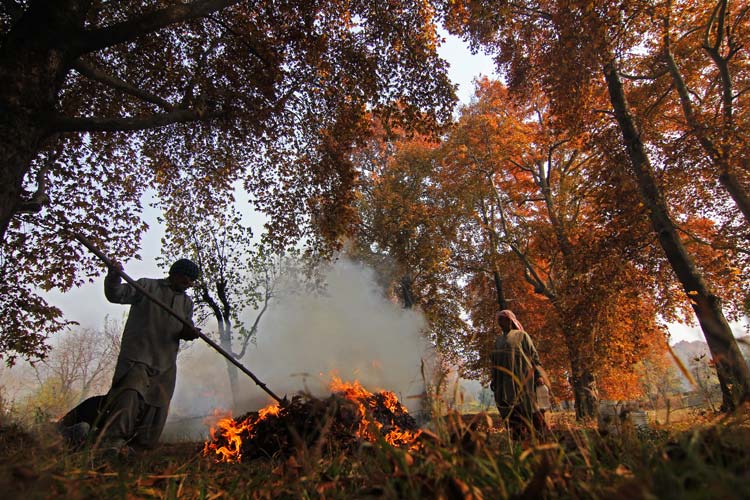With over 100,000 dogs roaming freely in Srinagar we must know all about first-aid when bitten by a rabid canine. Dr S Muhammad Salim Khan has a prescription everyone must keep handy to avoid falling to rabies.
Every day 10 to 20 new dog bites cases are reported in SMHS Hopital, Srinagar while in peripheral government health facilities, the number is four-fold. Unfortunately, not many are aware about pre-hospital management of dog-bites. Expensive anti-rabies vaccines and other injections in private sector make the treatment unaffordable for many victims, making them vulnerable to deadly rabies.
Rabies is a viral disease which infects domestic and wild animals. It is transmitted to other animals and humans through close contact with saliva from infected animals (i.e. bites, scratches, licks on broken skin and mucous membranes). Once symptoms of the disease develop, rabies is fatal to both animals and humans.
The first symptoms of rabies are usually non-specific and usually involve the respiratory, gastrointestinal and/or central nervous systems. In the acute stage, signs of hyperactivity (furious rabies) or paralysis (dumb rabies) can also occur. In both furious and dumb rabies, paralysis eventually leads to coma and death in all cases.
 According to WHO, more than three billion people are at risk for rabies in over 85 countries and territories worldwide, and about 50,000–60,000 deaths annually from rabies are estimated. India accounts for 70 per cent (or roughly 20,000) of the world’s rabies-related deaths.
According to WHO, more than three billion people are at risk for rabies in over 85 countries and territories worldwide, and about 50,000–60,000 deaths annually from rabies are estimated. India accounts for 70 per cent (or roughly 20,000) of the world’s rabies-related deaths.
The most frequent way humans become infected with rabies is through the bite of infected dogs and cats and some other wild animals.
Management of animal bites: The most effective mechanism of protection against rabies is to wash and flush a wound or point of contact with soap and water, detergent or plain water for at least 10 minutes, followed by the application of ethanol, tincture or aqueous solution of iodine. No bandaging or occlusive dressing should be done except when it’s profusely bleeding or wound is massive.
Anti-rabies vaccine should be given for Category II and III exposures as soon as possible. Anti-rabies immunoglobulin (antibody) should be applied for all Category III exposures and for Category II exposures. Suturing (stitching the wound) should be postponed, but if it is necessary immunoglobulin must first be applied. Where indicated, anti-tetanus treatment, antimicrobials and drugs should be administered to control infections other than rabies.
Vaccines and immunization: Nowadays neural tissue rabies vaccines, that used to be given sub-cutaneous in abdominal wall is not prescribed any more. Instead highly purified and potent modern cell culture and embryonated egg vaccines should be used.
Nowadays, intra-dermal regimen is also prescribed, which has reduced the treatment cost by 50-60 %. Intra-dermal injections should be administered by staff well trained in this technique. The intra-dermal injections has already been started in anti-rabies clinic of SMHS Hospital, Srinagar by department of SPM and at various health centres & hospitals in Kashmir division.
Rabies immunoglobulin: Rabies immunoglobulins should be administered in all Category III exposures and in Category II exposures. The full dose of rabies immunoglobulin, or as much as is anatomically feasible, should be administered into and around the wound site. Any remainder should be injected intramuscularly at a site distant from the vaccine administrative site.
Lets be pro-active to control the menace of dogs, the number of those may exceed humans in Srinagar in coming years if we don’t act now.
(The author is a Life member of Association for prevention and control of rabies in India (APCRI) and is working as Lecturer in the Department of Community Medicine (SPM), Government Medical College, Srinagar).















